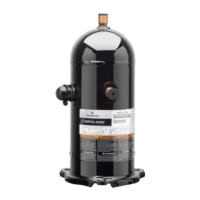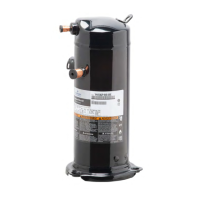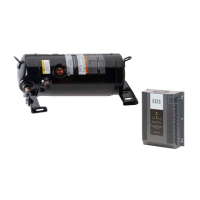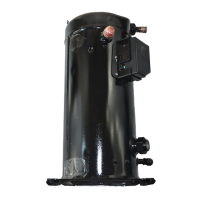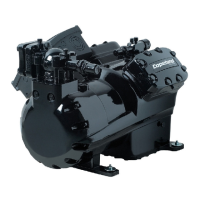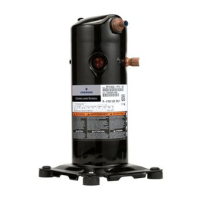38 AGL_HP_VS_YHV_RG_RT_EN_Rev00
7 Troubleshooting
WARNING
Conductor cables! Electrical shock hazard!
electrical troubleshooting, make sure all grounds are connected and secure
and there is ground continuity
throughout the compressor system. Also ensure
the compressor system is correctly grounded to the power supply. If you are
not a qualif ied service person familiar with electrical troubleshooting
techniques, DO NOT PROCEED until a qualified service person is
Most in-warranty electrical failures are a result of mechanical problems (particles in the oil, liquid
ref rigerant in the oil, etc.) and most mechanical problems are a result of system problems. Unless
the reason for the failure is found, replacing the compressor will probably lead to another compressor
failure.
If the compressor fails to start and run properly, it is important that the compressor be tested to
determine its condition. It is possible that electrical components may be defective, the protector may
be open, or a safety device may have tripped. Below is a list of the most common compressor
problems encountered in the field.
When troubleshooting a compressor in combination with a drive please follow the recommendations
below:
Read and analyse the alarm registers from the drive and the system controller.
Before servicing, shut off and secure the power supply and allow drive components to electrically
discharge. Discharge times are given in the drive manual and must be respected.
Drive: Check all the external wiring for miswiring, broken leads or a cable short circuit. Check for
loose or burned contacts. Check for burned components on the board.
Chokes/PFC: Check all the wiring and check for loose or burned contacts.
External sensors: Make sure that the external sensors are properly connected and still working
(discharge temperature sensor and high-pressure switch).
Drive cooling: For air-cooled drives, make sure that the airflow is not obstructed.
EMI filter: Check all the wiring and check for loose or burned contacts on the board.
Compressor: Make sure the compressor is running within the envelope. Check the winding
resistances from the compressor motor and the cables between compressor and drive. Check for
loose or burned contacts.
Condition Cause Corrective action
The scroll
compressor does
not run, instead a
buzz sound can be
heard
Wired incorrectly
Check the power supply on the compressor terminals for measured
voltage. Trace the wiring diagram to see where the circuit is
interrupted.
Low supply
voltage
If the voltage falls below 90 % of the nameplate voltage, the motor may
develop insufficient torque. Make sure the compressor is supplied with
rated nominal voltage.
Shorted or
windings
Check the motor for ground by means of a continuity check between
the terminals. If grounded replace compressor.
Internal
compressor
mechanical
damage
Refrigerant migration: When the compressor is switched off for a
long period, refrigerant can condense in the crankcase. If the
compressor body is colder than the evaporator, refrigerant will move
from the evaporator to the compressor crankcase. Refrigerant
migration normally occurs when the compressor is installed in a cold
area. A crankcase heater and/or a pumpdown cycle provide good
protection against refrigerant migration.
Acid formation: Acid forms in the presence of m oisture, oxygen,
metal, salts, metal oxides and/or high discharge temperatures. The
chemical reactions are accelerated at higher temperatures. Oil and
acid react with each other. Acid formation leads to damage of the
moving parts and in extreme cases to motor burnout. Different test
methods can be used to test for acid formation. If acid is present a
complete oil change (including the oil in the oil separator) will help.
A suction filter which removes acid shou
ld also be fitted. Check filter
dryer condition.

